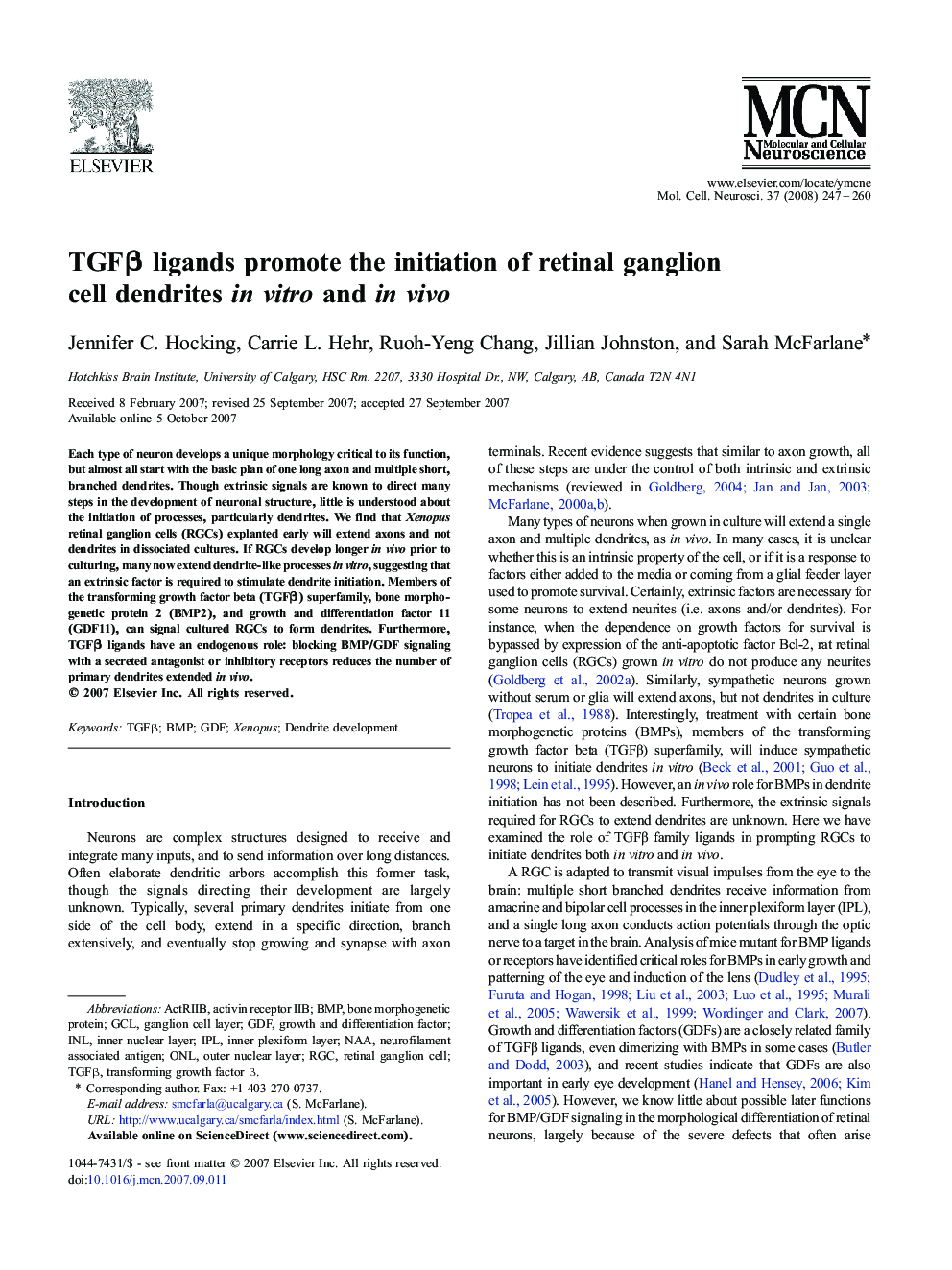| Article ID | Journal | Published Year | Pages | File Type |
|---|---|---|---|---|
| 2199179 | Molecular and Cellular Neuroscience | 2008 | 14 Pages |
Each type of neuron develops a unique morphology critical to its function, but almost all start with the basic plan of one long axon and multiple short, branched dendrites. Though extrinsic signals are known to direct many steps in the development of neuronal structure, little is understood about the initiation of processes, particularly dendrites. We find that Xenopus retinal ganglion cells (RGCs) explanted early will extend axons and not dendrites in dissociated cultures. If RGCs develop longer in vivo prior to culturing, many now extend dendrite-like processes in vitro, suggesting that an extrinsic factor is required to stimulate dendrite initiation. Members of the transforming growth factor beta (TGFβ) superfamily, bone morphogenetic protein 2 (BMP2), and growth and differentiation factor 11 (GDF11), can signal cultured RGCs to form dendrites. Furthermore, TGFβ ligands have an endogenous role: blocking BMP/GDF signaling with a secreted antagonist or inhibitory receptors reduces the number of primary dendrites extended in vivo.
